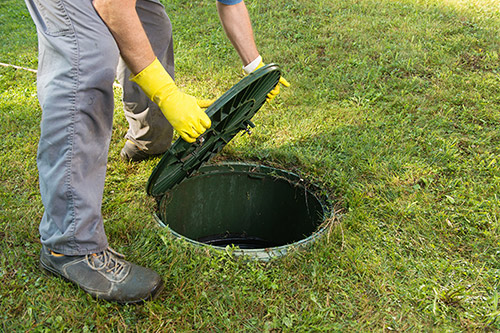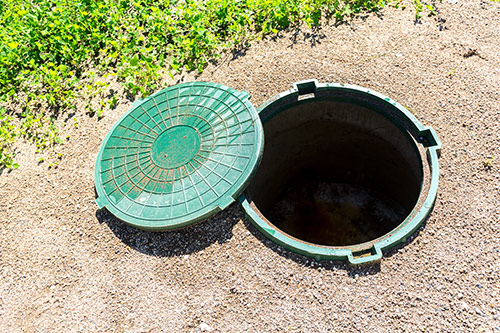
If you own a septic tank, you are responsible for it. That means professional maintenance, vigilant care, and proper treatment. The main benefits of proper maintenance are cost savings and environmental protection.
1. Get a professional inspection
If you are buying a home and it has a septic tank, make sure it is professionally inspected before you move forward. Important information to gather includes the age and location of the septic tank, including any installation and maintenance details. Some signs of a damaged septic tank system are damaged vents, soggy lawns, and odors.
If your home inspector recommends a specialist, get one.
As a septic tank owner, you are now responsible for regular maintenance and pumpings.
Have your septic tank inspected by a licensed professional every 3 years. Schedule septic tank pumpings whenever necessary or every 3 – 5 years. Alternative septic systems should be inspected annually.
2. Watch what goes down your drains
One of the most important factors for maintaining the health and effectiveness of your septic system is to watch what goes down your drains.
You may already know not to pour chemicals, grease, oil pesticides, gasoline, antifreeze, or paint down your drains, but read on to find out about the things you may not know about.
Toilets:
There are only two things that should ever go down your toilet: human waste and toilet paper. It’s simple. But, that means no wet wipes, feminine hygiene products, tissues, paper towels, Q-tips, or anything else. Read our blog for more information about what NOT to throw down your toilet and why it’s so important.
Laundry Room:
Many people don’t realize that running multiple loads of laundry during the day can put excess strain on your septic system, risking flooding to the drainfield. Consider spreading out your washes over the week and switching to a more energy and water efficient washer, such as an ENERGY STAR washer.
Kitchen Sinks/Garbage Disposal:
Grease, oil, chemicals, paint, and other household products separate from the wastewater in your septic tank and eventually need to be properly disposed of. Reduce the amount of scum and sludge that enters your drainage system or prepare to spend more time and money on septic tank inspections and pumpings.
If you are an urban dweller, you still have a responsibility to watch what goes down your drains.
3. Use water efficiently
Too much water entering the septic tank can cause overflow and flooding problems. Besides saving money on your water bill, you can help maintain your septic system by watching how much water you use.
Luckily, there are some easy ways to minimize your use of water:
- Switch over to low-flow plumbing fixtures and high-efficiency toilets.
- Install or replace faucet aerators
- Run full loads of dishes and laundry
- Periodically test your plumbing system for leaks
- Take shorter showers and be mindful of water waste
- Upgrade to energy-efficient appliances
- Only use toilets for flushing toilet paper and human waste
- Sign up for a plumbing maintenance plan or remember to schedule professional plumbing maintenance every year
4. Care for your drainfield
If you aren’t taking proper care of your drainfield, you risk sewage flooding your property, damaged vegetation, and much more. Make sure you are taking care of your drainfield by:
- Planting only grass and removing any trees or plants that can cause root intrusion
- Not driving or parking on the drainfield. The soil can compress and damage parts of your septic system.
- Diverting other water sources away from the drainfield. Make sure rainwater, sump pump drains, and other excessive water is diverted elsewhere. Drainfield flooding is a common problem that can cause septic tank problems and plumbing fixture backups.
For more information or an inspection, contact Morse Engineering and Construction.
EPA


